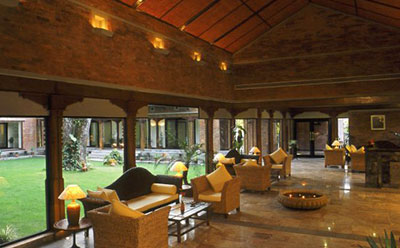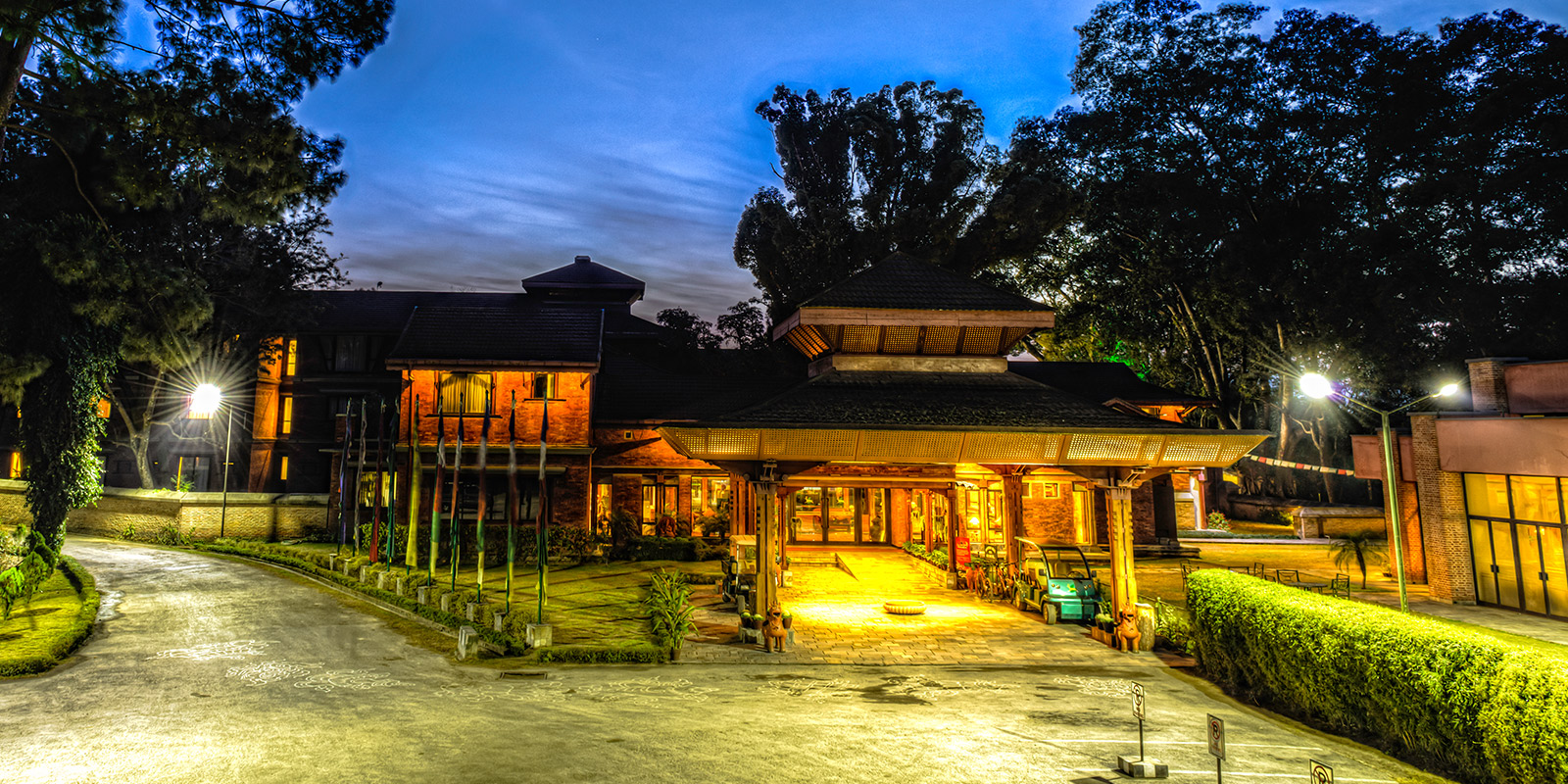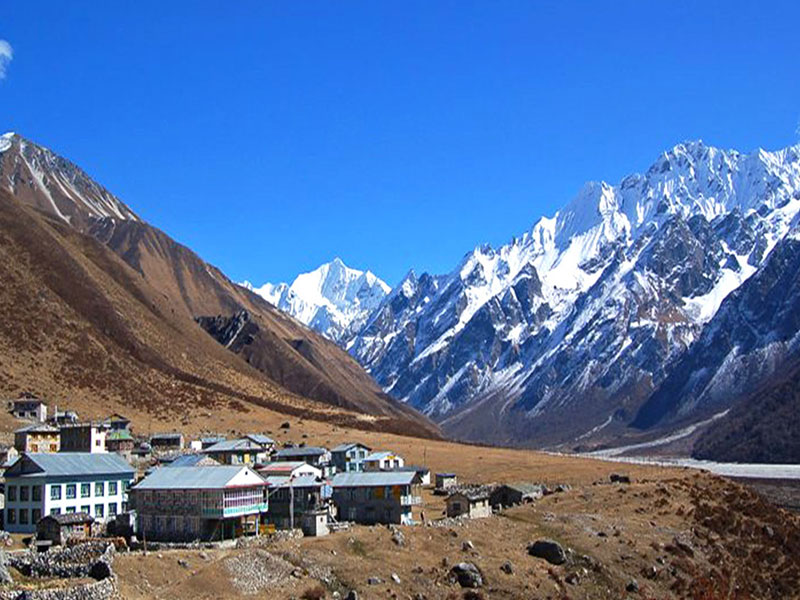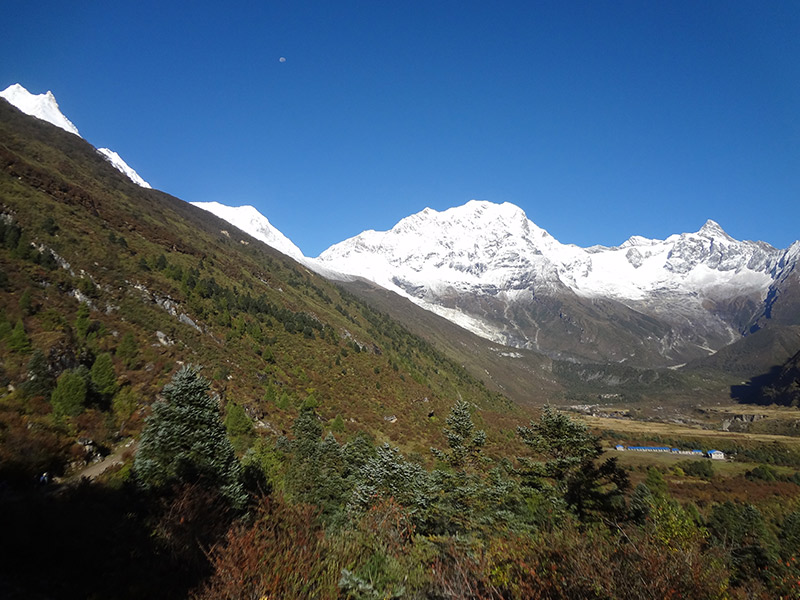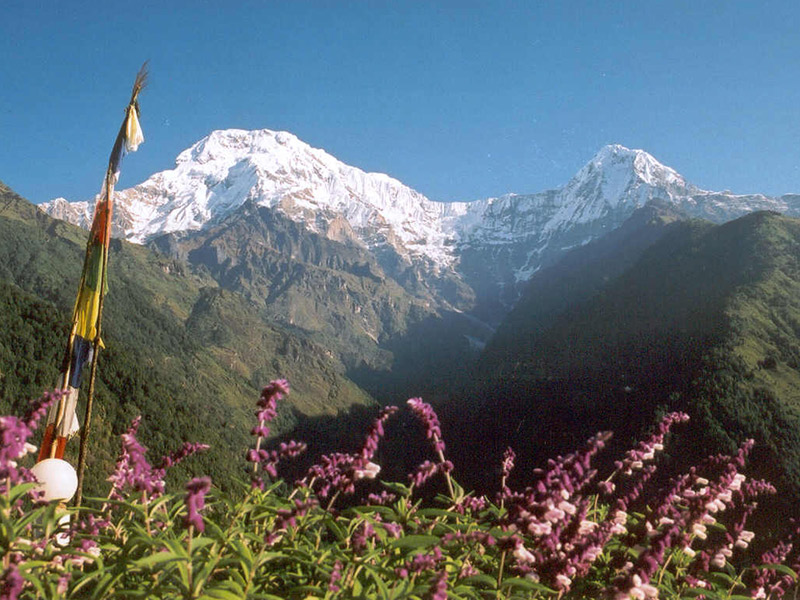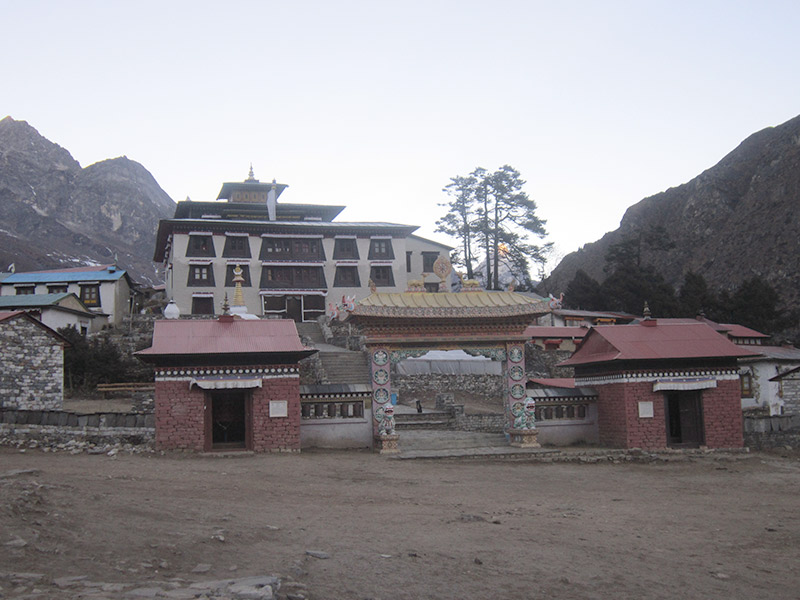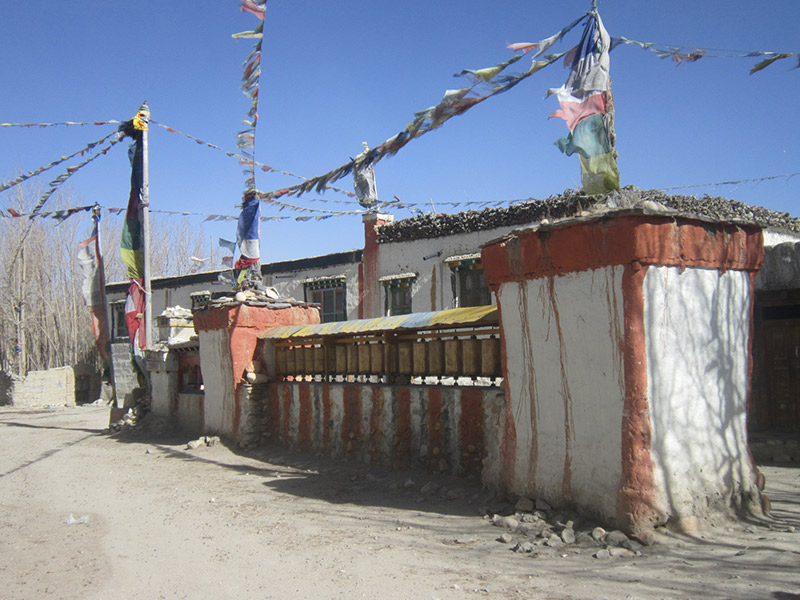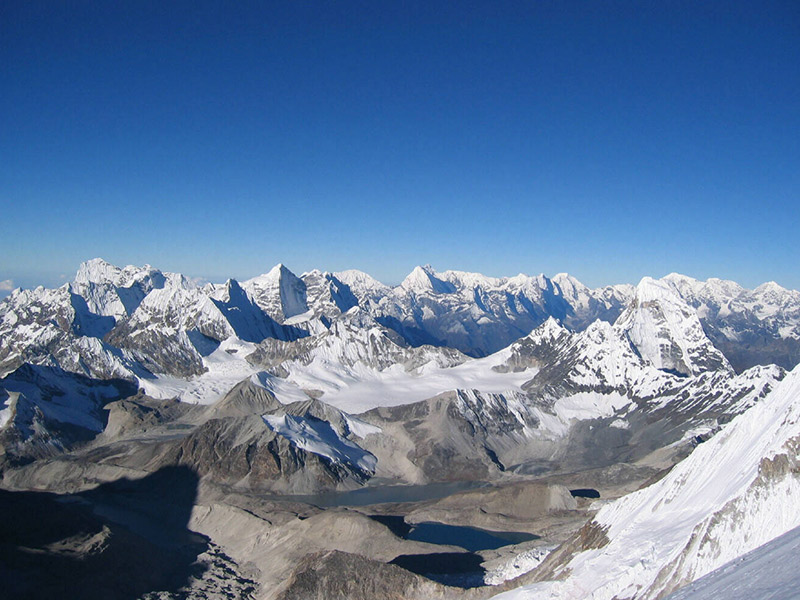
Langtang Heli Trek

Langtang Heli Trek
-
Destination:Nepal
-
Region:Langtang
-
Type:Trek
-
Max. Altitude:4984m
-
Activity:Heli Treks
-
Group size:3 - 8 people
-
Accomodation:Hotel, Lodge
-
Trekking in Langtang region is one of the nearest destinations from Kathmandu which is situated at 132 km north of Kathmandu and offers the great panoramic views of Himalayas with its rich biodiversity in flora & fauna. The main habitants: Tamang with their rich culture and people of Tibetan origin is another attraction of this region. It is accessible without flights. Tea house trek along the trail gives us an opportunity to experience the great views of the mountains not to be found elsewhere. The area is sandwiched between the main Himalayan range in the north and with the chain of gigantic peaks to the south. Langtang Lirung Langtang (7246m), Thrimzhung Gang (6388m), Naya Kangri (5846m), Yala peak (5700m) and Dorjee Lakpa (6966m) etc...
Founded in 1976, Langtang National Park, the first national park in the Himalaya and the second largest in Nepal.
Trip Highlights
- Panoramic views of some of the gigantic peaks: Annapurna, Dhaulagiri, Machapuchare
- Experience 20minutes of helicopter flight from Kyangjin Gompa to Kathmandu with magnificent views of the Himalayas which are the unique specialty of this trip.
- - Visit Langtang to experience how the people have Langtang have rebuilt their lives after the earthquake.
What is included
- Airport/Hotel/Airport Transfer
- 4 Nights hotel Kathmandu in Gokarna Resort on BB Twin Room
- 5 nights Normal Local Lodge on FB Twin Room
- Transfer: KTM-Shyabrubesi for member & staffs
- Heli Flight : Kyangjin Gompa-KTM
- National Park & TIMS Permit Fee
- 1 English speaking Leader
- 1 porter-every two members
- All staffs insurance & daily wages & food
- Farewell Dinner in Kathmandu
What is not included
- Personal Equipment & Insurance.
- Nepal Visa fee US $40 per person.
- Alcoholic Beverages, Telephone & Laundry.
- Any personal nature expenses.
- Emergency Evacuation if required.
- Tips for Staffs.
Contact Our Travel Specialist
Mobile: +977 9801236280
This email address is being protected from spambots. You need JavaScript enabled to view it.Trip Notes
Download the detailed trip notes for everything you could possibly want to know about this trip, including detailed itinerary and full kit list.
View Trip NotesDifficulty Level
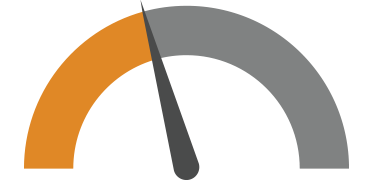
Moderate
Half- to full-day hikes (3-6 hours) over rolling countryside on most days, occasional steep trails. Many of our hotel-based walking tours are in this category, as are our snorkeling adventures.
-
Detailed Itinerary
-
Day 1
Arrival in Kathmandu
Meals: BAccommodation: Gokarna Forest ResortDepending on your arrival time, our representative will be at the airport to receive you and transfer you to your booked hotel. Evening time can be spent taking a tour in busy Thamel Street or just enjoying your beer in the hotel garden.Meals: BAccommodation: Gokarna Forest Resort -
Day 2
Free Day in Kathmandu
Meals: BAccommodation: Gokarna Forest ResortYour free day in Kathmandu today can be used relaxing in the hotel or taking an optional day sightseeing to the cultural heritage sites in Kathmandu.Meals: BAccommodation: Gokarna Forest Resort -
Day 3
Drive to Syabrubesi (2130m) via Dhunche (1965) – 8 Hrs Drive
Meals: BLDAfter breakfast you will be driven to Shyabrubesi, which is 132km north from Kathmandu. The drive will approximately take 7-9 hours. You will follow Pasang Lhamu Highway to reach towards the destination Syabrubesi, on the way you will pass through several locations like Kakani (best known for panoramic view of great Himalayas of Nepal, hills and Kathmandu city itself), Trishuli Bazaar and Dhunche. The route will be accompanied by magnificent views of mountains such as Annapurna, Langtang, Ganesh Himal etc. and an opportunity to observe local villages, their people and lifestyle.
Overnight LodgeMeals: BLD -
Day 4
Trek to Lama Hotel (2470m) – 6 Hrs Trek
Meals: BLDThe walk starts in the middle of paddy fields. Terraces, very regular, are terraced on the hillside; silent witnesses of the men working. A suspension bridge crosses the Langtang Khola. On the opposite bank, pleasant progression in the middle of a dense forest of pine, birch, oak and bamboo. Be careful, herds of Langur monkeys inhabit the forest in number, as well as several varieties of colorful birds. Other animals like wild boar, red panda and even the Himalayan bear might be seen during the course of walk in the forest.
Overnight LodgeMeals: BLD -
Day 5
Trek to Langtang (3430m) – 4 Hrs Trek
Meals: BLDThe day begins with a steep ascent, under draperies numerous waterfalls. A gradual descent leads to Lama Hotel. The vegetation changes: maples, oaks and breathtaking spring-flowering rhododendrons surround us. Heralds of the high mountain flanks gleaming Langtang Lirung will be discovered little by little. Altitude increases, the forest gives way to sparse shrubs.
Stop at the national park check-post, in a joyful bonhomie, the local official stamps our permits. Emerging from narrow gorge, the road enters into a wide glacial valley: the world of the altitude starts here. Mani walls engraved with the mantra "Om Mani Padme Um," triptychs protectors of the village, prayer flags fluttering in the wind, Chorten, mark the entry into Buddhist land. Remember, in order not to incur the wrath of the gods, all these religious monuments must be passed from the left! Langtang, the only village in the upper valley, awakens in a bright light. Stone houses with flat roofs, cones dried yak dung, architecture recalls the close Tibet. Yak breeders, people grow buckwheat, barley, millet and potatoes. Enjoy your afternoon observing the local lifestyle.
Overnight Lodge
Meals: BLD -
Day 6
Trek to Kyangjin Gompa (3870m)
Meals: BLDAn easy walk today towards the top of the valley will help you acclimatize with the growing elevation. Views of Mt. Gangchempo and Langtang Lirung will make a picturesque ambience for photographs. The Yak Cheese factory will be interesting to visit as you go. And easy walk up to Kyangjin will bring us to our rest stop for tonight in afternoon where you can just site and enjoy the amazing landscape this place has to offer.
Overnight LodgeMeals: BLD -
Day 7
Hike to Tsergo Ri (4984m) – 7 Hrs Trek
Meals: BLDFull day to explore the high valley of Langtang. The Tsergo Ri, where you will discover a wide view circular gazebo itself as: Lirung Langtang (7246m), Naya Kanga (5846m), Dorjee Lakpa (6966m), Langshisha Ri (6427m) and the distant summit of Shishapangma (8013m). The round trip is a good day effort, but the terrain has no problem other than altitude. Another alternative is less sporty up the valley to reach the alpine summer pastures of Langshisha Kharka. The climb, albeit lesser, feels little muscle, but it takes 8-9 hours walk.
Overnight LodgeMeals: BLD -
Day 8
Fly Back to Kathmandu
Meals: BLDAfter breakfast, Euro copter (5 seater) will pick you up from Kyangjin Gompa then return to Kathmandu. There will be several shuttle flights depending on the number of people in the group. It offers an incredible experience and views of the snowy mountains. It is one of the most popular Heli tour in Nepal. This is the flight of the life time very much exciting and unforgettable.
During the helicopter flight to Kyangjin Gompa, you will have a magnificent views of the majestic mountains located in the Langtang region like Langtang Lirung, Ganesh Himal, Dorjee Lakpa, the Yala peak, Naya Kanga, Gauri Shankar and chain Annapurnas.
Overnight LodgeMeals: BLD -
Day 9
Free Day in Kathmandu
Meals: BAccommodation: Gokarna Forest ResortWe deserve a free day where we can relax in our hotel garden with some chilled beers or go for a full day sightseeing that can be arranged upon request.Meals: BAccommodation: Gokarna Forest Resort -
Day 10
International Departure
Meals: BDepending on your flight time, our airport check in is 3 hours prior to the departure time and the hotel checkout time is 12PM. In case our flight is late evening please let us know if you require half day use of the hotel. Our representative will meet you at the hotel and transfer you to the airport.Meals: B
Contact Our Travel Specialist
Mobile: +977 9801236280
This email address is being protected from spambots. You need JavaScript enabled to view it.Trip Notes
Download the detailed trip notes for everything you could possibly want to know about this trip, including detailed itinerary and full kit list.
View Trip Notes -
-
Visa
Most nationalities require a visa for Nepal, which can be obtained in advance or on entry. If you wish to apply before departure the current visa cost is £20 for a 15 day visa and £35 for a 30 day visa for UK passport holders. The current cost of a visa on arrival is US $25 for 15 days, US $40 for 30 days or if extending your stay $100 for 90 days. All are multiple entry. The visa on arrival fee can be paid for in cash in US Dollars, Pounds Sterling or Euros. You will also need a passport photo. Application forms are available in the immigration hall (or for electronic passports there are visa registration machines which, after inserting your passport, automatically fill out a form for you). You must firstly join the queue to pay the visa fee, and then go to the relevant immigration desk to obtain your 15, 30 or 90 day visa stamp. There can be long queues for visas on arrival.
Non UK nationals should check requirements with their nearest embassy (a few nationalities are not permitted visas on arrival).Vaccinations
There are no mandatory vaccination requirements. Recommended vaccinations are: Polio, Tetanus, Diphtheria, Typhoid, Hepatitis A. The risk of malaria is present in certain regions only (such as Chitwan); you may wish to consult your GP or travel health clinic for further advice. Dengue fever is a known risk in places visited. It is a tropical viral disease spread by daytime biting mosquitoes. There is currently no vaccine or prophylaxis available for Dengue, and therefore the best form of prevention is to avoid being bitten. We recommend you take the usual precautions to avoid mosquito bites. Most of our trips to Nepal go to high altitudes where there is a risk of being affected by Acute Mountain Sickness. Our itineraries are designed to enable everyone to acclimatise to these altitudes, but you should be aware that it is still possible for you to be affected. Please refer to the TRIP NOTES for complete advice on AMS.
Eating & Drinking
Breakfast is included throughout the trip and all meals are provided while camping (all breakfasts, 3 lunches and 2 dinners).
Breakfast is included throughout the trip and all meals are provided while camping. On trek the breakfast will be a set menu usually consisting of porridge and toast. Any additional items that are not included in the set menu should be ordered and paid for separately. We do not include lunch and dinner in the tea-houses, allowing you to choose what you want to eat and when. Although most lodges have almost identical menus, they are reasonably extensive and offer a varied selection, ranging from traditional Nepalese dal bhat to pizza and apple pie.
Although meat is available in the tea houses, we advise against eating it on trek. The meat has often been carried in the heat from lower altitudes for several days before reaching the lodges, and can cause stomach upsets or illness. Germs can also be spread by handling dirty money - we recommend using hand sanitiser.
If you buy imported food and drink whilst on trek you will spend more than the suggested amount.
Drinking Water
Staying hydrated is important when undertaking any physical activity but particularly so at altitude where it is generally recommended to drink at least 3-4 litres per person per day.
We strongly encourage you not to buy bottled water on trek as this contributes to the growing problem of plastic pollution in Nepal’s trekking areas.
All tea houses will provide cold water free of charge, if requested. Although this should not be drunk untreated, we recommend that you bring a reusable bottle with a wide opening (Nalgene or similar) with you and use a SteriPEN to treat it with. A SteriPEN is a handheld UV water purifier – small, lightweight and battery powered so easy to pack for a trek. In Nepal’s trekking regions most of the bottled water isn’t strictly ‘mineral water’ anyway but is UV treated, so it’s exactly the same technology. It’s quick to use, far more effective than purification tablets, and the water is ready immediately. It’s fine to use a SteriPEN on non-boiled water so long as it isn’t cloudy or full of sediment (which is uncommon in these regions).
SteriPENs are widely stocked on Amazon, outdoor shops and other online retailers; look for the latest models but avoid USB charging ones. Better still, a SteriPEN will pay for itself over the course of the trek and you won’t leave behind a single plastic bottle – you will end up spending the same or even less than you would on bottled water, plus you can keep it for future trips.
If you prefer not to invest in a SteriPEN, the tea houses also sell boiled water for approx. Rs150-300 per litre (the price increases the higher you trek) which should not require treating. This is also perfect for a bedtime refill as it can double up as a hot water bottle.
While camping boiled water is supplied for drinking.Weather
The main trekking season in Nepal is from October to mid-May when daytime temperatures at most altitudes are generally comfortable for walking, the sky is clear much of the time and rain and snow are occasional occurrences. Daytime temperatures will vary from 15ºC to 35ºC in the Kathmandu Valley to around 10ºC at 3,600m and progressively lower the higher we go.
Different seasons offer different advantages for trekking.
Post Monsoon/autumn: Mid-September to November. This is the main trekking season in Nepal. Day temperatures in Kathmandu are approximately above 20ºC. Skies are usually clear and days on trek are sunny and mild with clear mountain views. At the highest altitudes although the days can be nice and sunny the temperatures can drop to 10ºC and much lower. Nights will be colder with temperatures dropping as low as minus 10ºC and lower at the highest altitudes.
Pre-monsoon/spring: March to May. Both day and night temperatures will be warmer in general but haze will often build up in the afternoons. It is very hot in the lowlands and temperatures rise to 35ºC in Kathmandu. Flowers bloom in this season and this is one of the reasons people chose to trek in spring.
Snow can be expected on any departure, usually at the higher altitudes. Summit day will be a very early start (usually about 2am) and will be extremely cold. Although mostly it is calm and clear on summit day the mountain does occasionally get high winds. You need to be equipped for temperatures as low as minus 25ºC plus wind chill on summit day.
Please remember that in any mountain area the weather is never wholly predictable and you should be prepared and equipped to deal with any differences in weather beyond the conditions described above.More Info
This is a Tough+ trek. It is activity level 9 with 16 days walking and full porterage throughout. The maximum altitude is 6,189m (or 5,545m without Island Peak) and the average is 3,680m. There are some steep ascents and descents and some narrow trails. As this trek also ascends to very high altitudes participants should be confident of their physical fitness and must have previous experience of trekking at altitude and in snow.
Although it is not compulsory to participate in the climb (the summit attempt is optional), anyone who does must have previous ice axe and crampon experience and know how to use a jumar and abseil device. There will be equipment checks and practice sessions for rope use, ice axe, crampon and harness use, abseiling and crevasse rescue. For safety reasons it is compulsory to participate in these sessions. If you do not take part the leader and climbing Sherpas will not allow you to take part in the climb.
Though technically harder than Mera Peak, for those with the necessary experience this expedition is within the reach of those seeking their first Himalayan summit. The climb requires strong lungs and a great deal of will power - it is graded alpine PD+ and starts with some rocky scrambling to a glacier. We cross the glacier roped up (there is one ladder to cross), and then come to a 200m steep 40-45 degree headwall, which leads to a 20m summit ridge. We will rope up to cross the glacier and you will be walking with an ice axe, crampons and plastic boots. There are fixed ropes up the headwall (approximately 200m) and along the summit ridge. On the ascent you will need to use a jumar and on the descent you will need to use an abseil device.
Please be aware that altitude can have a significant affect on your physical state. It is important that you take heed of the leader's advice and decisions at all times. The leaders are trained in first aid and are well aware of AMS symptoms and will keep a close eye on the group. We ask you to refer to the altitude warning within the Trip Notes.
The climb itself is not recommended for anyone with a fear of heights or vertigo and the main trail itself crosses three modern suspension bridges over rivers and valleys - all of these have mesh sides but some are quite long and high.Contact Our Travel Specialist
Mobile: +977 9801236280
This email address is being protected from spambots. You need JavaScript enabled to view it.Trip Notes
Download the detailed trip notes for everything you could possibly want to know about this trip, including detailed itinerary and full kit list.
View Trip NotesEquipment Checklist
Body
-
Selection T-shirts and long sleeved shirts
-
Thermal shirts for cold area
-
Warm shirts possibility fleece for cold areas
-
Fleece jacket or warm wool jumper
-
Wind/water proof jacket
-
Down Jacket for 5000m altitude
-
Inner Vests
-
Under wears
-
Raincoat
Foot Wear
-
1 Pair walking boots (Trekking Shoes)
-
Trainer or casual shoes for trekking/travelling
-
Warm socks for colder areas
-
Gaiters in case of rain or snow
Log wear
-
Loose casual trouser for trekking
-
Thermal leggings for cold area
-
Long skirt for women as an alternative to trousers
-
Water proof trousers
Wash Kit
-
1 Wash bag with zipped
-
2 Toothpaste
-
1 Toothbrush
-
1 Face washes soap in box antibacterial
-
Cotton bud
-
1 Razor
-
1 Nail clippers
Miscellaneous
-
1 Sun lotion
-
1 Lip balm
-
1 Head lamp
-
1 Diry book for personal memoranda
-
2 Pen or pencil
-
1 Water bottle 1 ltr.
-
1 small knife
-
1 head light
Pack
-
1- Small Day pack (Rucksack)
-
1-Duffel bag
Others
-
Your choice of Camera
-
Binocular
-
Swimming Custom for Kathmandu
-
Extra clothes for Kathmandu
Recommended for Mountaineering Equipment list for TREKKING PEAKS
-
Plastic or leather for mountaineering boots
-
Gaitors & crampons
-
Fleece trouser or salopettes
-
Climbing gloves
-
Ice axe, ski pole, Harness, Karabiners , ropes, crampons
-
Snow googols, Desender/abseil device, Asender , Tapes
Head/Hand wear
-
1 Fleece or woollen hat
-
Hat or cap for sun protection while trekking
-
1 Sun glasses or goggles
-
Warm gloves
-
-
Accommodation
This tour spends three nights in a hotel in Kathmandu and six nights on the trek in lodges (tea houses).
In Kathmandu, we normally use a 3-star hotel located within walking distance of the Thamel.
On the trek, we will stay in tea houses for the most part. The tea houses are basic but adequate; please be realistic about what to expect in the mountains.
Contact Our Travel Specialist
Mobile: +977 9801236280
This email address is being protected from spambots. You need JavaScript enabled to view it.Trip Notes
Download the detailed trip notes for everything you could possibly want to know about this trip, including detailed itinerary and full kit list.
View Trip Notes -
Make This Tour Private
Want to make it a private tour ?
Book this trip as a private departure - for any group, big or small.
-
Write a Review
-
Overview
Trekking in Langtang region is one of the nearest destinations from Kathmandu which is situated at 132 km north of Kathmandu and offers the great panoramic views of Himalayas with its rich biodiversity in flora & fauna. The main habitants: Tamang with their rich culture and people of Tibetan origin is another attraction of this region. It is accessible without flights. Tea house trek along the trail gives us an opportunity to experience the great views of the mountains not to be found elsewhere. The area is sandwiched between the main Himalayan range in the north and with the chain of gigantic peaks to the south. Langtang Lirung Langtang (7246m), Thrimzhung Gang (6388m), Naya Kangri (5846m), Yala peak (5700m) and Dorjee Lakpa (6966m) etc...
Founded in 1976, Langtang National Park, the first national park in the Himalaya and the second largest in Nepal.
Trip Highlights
- Panoramic views of some of the gigantic peaks: Annapurna, Dhaulagiri, Machapuchare
- Experience 20minutes of helicopter flight from Kyangjin Gompa to Kathmandu with magnificent views of the Himalayas which are the unique specialty of this trip.
- - Visit Langtang to experience how the people have Langtang have rebuilt their lives after the earthquake.
What is included
- Airport/Hotel/Airport Transfer
- 4 Nights hotel Kathmandu in Gokarna Resort on BB Twin Room
- 5 nights Normal Local Lodge on FB Twin Room
- Transfer: KTM-Shyabrubesi for member & staffs
- Heli Flight : Kyangjin Gompa-KTM
- National Park & TIMS Permit Fee
- 1 English speaking Leader
- 1 porter-every two members
- All staffs insurance & daily wages & food
- Farewell Dinner in Kathmandu
What is not included
- Personal Equipment & Insurance.
- Nepal Visa fee US $40 per person.
- Alcoholic Beverages, Telephone & Laundry.
- Any personal nature expenses.
- Emergency Evacuation if required.
- Tips for Staffs.
-
Detailed Itinerary
Day 1 : Arrival in Kathmandu
Depending on your arrival time, our representative will be at the airport to receive you and transfer you to your booked hotel. Evening time can be spent taking a tour in busy Thamel Street or just enjoying your beer in the hotel garden.Meals: BAccommodation: Gokarna Forest ResortDay 2 : Free Day in Kathmandu
Your free day in Kathmandu today can be used relaxing in the hotel or taking an optional day sightseeing to the cultural heritage sites in Kathmandu.Meals: BAccommodation: Gokarna Forest ResortDay 3 : Drive to Syabrubesi (2130m) via Dhunche (1965) – 8 Hrs Drive
After breakfast you will be driven to Shyabrubesi, which is 132km north from Kathmandu. The drive will approximately take 7-9 hours. You will follow Pasang Lhamu Highway to reach towards the destination Syabrubesi, on the way you will pass through several locations like Kakani (best known for panoramic view of great Himalayas of Nepal, hills and Kathmandu city itself), Trishuli Bazaar and Dhunche. The route will be accompanied by magnificent views of mountains such as Annapurna, Langtang, Ganesh Himal etc. and an opportunity to observe local villages, their people and lifestyle.
Overnight LodgeMeals: BLDDay 4 : Trek to Lama Hotel (2470m) – 6 Hrs Trek
The walk starts in the middle of paddy fields. Terraces, very regular, are terraced on the hillside; silent witnesses of the men working. A suspension bridge crosses the Langtang Khola. On the opposite bank, pleasant progression in the middle of a dense forest of pine, birch, oak and bamboo. Be careful, herds of Langur monkeys inhabit the forest in number, as well as several varieties of colorful birds. Other animals like wild boar, red panda and even the Himalayan bear might be seen during the course of walk in the forest.
Overnight LodgeMeals: BLDDay 5 : Trek to Langtang (3430m) – 4 Hrs Trek
The day begins with a steep ascent, under draperies numerous waterfalls. A gradual descent leads to Lama Hotel. The vegetation changes: maples, oaks and breathtaking spring-flowering rhododendrons surround us. Heralds of the high mountain flanks gleaming Langtang Lirung will be discovered little by little. Altitude increases, the forest gives way to sparse shrubs.
Stop at the national park check-post, in a joyful bonhomie, the local official stamps our permits. Emerging from narrow gorge, the road enters into a wide glacial valley: the world of the altitude starts here. Mani walls engraved with the mantra "Om Mani Padme Um," triptychs protectors of the village, prayer flags fluttering in the wind, Chorten, mark the entry into Buddhist land. Remember, in order not to incur the wrath of the gods, all these religious monuments must be passed from the left! Langtang, the only village in the upper valley, awakens in a bright light. Stone houses with flat roofs, cones dried yak dung, architecture recalls the close Tibet. Yak breeders, people grow buckwheat, barley, millet and potatoes. Enjoy your afternoon observing the local lifestyle.
Overnight Lodge
Meals: BLDDay 6 : Trek to Kyangjin Gompa (3870m)
An easy walk today towards the top of the valley will help you acclimatize with the growing elevation. Views of Mt. Gangchempo and Langtang Lirung will make a picturesque ambience for photographs. The Yak Cheese factory will be interesting to visit as you go. And easy walk up to Kyangjin will bring us to our rest stop for tonight in afternoon where you can just site and enjoy the amazing landscape this place has to offer.
Overnight LodgeMeals: BLDDay 7 : Hike to Tsergo Ri (4984m) – 7 Hrs Trek
Full day to explore the high valley of Langtang. The Tsergo Ri, where you will discover a wide view circular gazebo itself as: Lirung Langtang (7246m), Naya Kanga (5846m), Dorjee Lakpa (6966m), Langshisha Ri (6427m) and the distant summit of Shishapangma (8013m). The round trip is a good day effort, but the terrain has no problem other than altitude. Another alternative is less sporty up the valley to reach the alpine summer pastures of Langshisha Kharka. The climb, albeit lesser, feels little muscle, but it takes 8-9 hours walk.
Overnight LodgeMeals: BLDDay 8 : Fly Back to Kathmandu
After breakfast, Euro copter (5 seater) will pick you up from Kyangjin Gompa then return to Kathmandu. There will be several shuttle flights depending on the number of people in the group. It offers an incredible experience and views of the snowy mountains. It is one of the most popular Heli tour in Nepal. This is the flight of the life time very much exciting and unforgettable.
During the helicopter flight to Kyangjin Gompa, you will have a magnificent views of the majestic mountains located in the Langtang region like Langtang Lirung, Ganesh Himal, Dorjee Lakpa, the Yala peak, Naya Kanga, Gauri Shankar and chain Annapurnas.
Overnight LodgeMeals: BLDDay 9 : Free Day in Kathmandu
We deserve a free day where we can relax in our hotel garden with some chilled beers or go for a full day sightseeing that can be arranged upon request.Meals: BAccommodation: Gokarna Forest ResortDay 10 : International Departure
Depending on your flight time, our airport check in is 3 hours prior to the departure time and the hotel checkout time is 12PM. In case our flight is late evening please let us know if you require half day use of the hotel. Our representative will meet you at the hotel and transfer you to the airport.Meals: B -
Essential Info
Visa
Most nationalities require a visa for Nepal, which can be obtained in advance or on entry. If you wish to apply before departure the current visa cost is £20 for a 15 day visa and £35 for a 30 day visa for UK passport holders. The current cost of a visa on arrival is US $25 for 15 days, US $40 for 30 days or if extending your stay $100 for 90 days. All are multiple entry. The visa on arrival fee can be paid for in cash in US Dollars, Pounds Sterling or Euros. You will also need a passport photo. Application forms are available in the immigration hall (or for electronic passports there are visa registration machines which, after inserting your passport, automatically fill out a form for you). You must firstly join the queue to pay the visa fee, and then go to the relevant immigration desk to obtain your 15, 30 or 90 day visa stamp. There can be long queues for visas on arrival.
Non UK nationals should check requirements with their nearest embassy (a few nationalities are not permitted visas on arrival).Vaccinations
There are no mandatory vaccination requirements. Recommended vaccinations are: Polio, Tetanus, Diphtheria, Typhoid, Hepatitis A. The risk of malaria is present in certain regions only (such as Chitwan); you may wish to consult your GP or travel health clinic for further advice. Dengue fever is a known risk in places visited. It is a tropical viral disease spread by daytime biting mosquitoes. There is currently no vaccine or prophylaxis available for Dengue, and therefore the best form of prevention is to avoid being bitten. We recommend you take the usual precautions to avoid mosquito bites. Most of our trips to Nepal go to high altitudes where there is a risk of being affected by Acute Mountain Sickness. Our itineraries are designed to enable everyone to acclimatise to these altitudes, but you should be aware that it is still possible for you to be affected. Please refer to the TRIP NOTES for complete advice on AMS.
Eating & Drinking
Breakfast is included throughout the trip and all meals are provided while camping (all breakfasts, 3 lunches and 2 dinners).
Breakfast is included throughout the trip and all meals are provided while camping. On trek the breakfast will be a set menu usually consisting of porridge and toast. Any additional items that are not included in the set menu should be ordered and paid for separately. We do not include lunch and dinner in the tea-houses, allowing you to choose what you want to eat and when. Although most lodges have almost identical menus, they are reasonably extensive and offer a varied selection, ranging from traditional Nepalese dal bhat to pizza and apple pie.
Although meat is available in the tea houses, we advise against eating it on trek. The meat has often been carried in the heat from lower altitudes for several days before reaching the lodges, and can cause stomach upsets or illness. Germs can also be spread by handling dirty money - we recommend using hand sanitiser.
If you buy imported food and drink whilst on trek you will spend more than the suggested amount.
Drinking Water
Staying hydrated is important when undertaking any physical activity but particularly so at altitude where it is generally recommended to drink at least 3-4 litres per person per day.
We strongly encourage you not to buy bottled water on trek as this contributes to the growing problem of plastic pollution in Nepal’s trekking areas.
All tea houses will provide cold water free of charge, if requested. Although this should not be drunk untreated, we recommend that you bring a reusable bottle with a wide opening (Nalgene or similar) with you and use a SteriPEN to treat it with. A SteriPEN is a handheld UV water purifier – small, lightweight and battery powered so easy to pack for a trek. In Nepal’s trekking regions most of the bottled water isn’t strictly ‘mineral water’ anyway but is UV treated, so it’s exactly the same technology. It’s quick to use, far more effective than purification tablets, and the water is ready immediately. It’s fine to use a SteriPEN on non-boiled water so long as it isn’t cloudy or full of sediment (which is uncommon in these regions).
SteriPENs are widely stocked on Amazon, outdoor shops and other online retailers; look for the latest models but avoid USB charging ones. Better still, a SteriPEN will pay for itself over the course of the trek and you won’t leave behind a single plastic bottle – you will end up spending the same or even less than you would on bottled water, plus you can keep it for future trips.
If you prefer not to invest in a SteriPEN, the tea houses also sell boiled water for approx. Rs150-300 per litre (the price increases the higher you trek) which should not require treating. This is also perfect for a bedtime refill as it can double up as a hot water bottle.
While camping boiled water is supplied for drinking.Weather
The main trekking season in Nepal is from October to mid-May when daytime temperatures at most altitudes are generally comfortable for walking, the sky is clear much of the time and rain and snow are occasional occurrences. Daytime temperatures will vary from 15ºC to 35ºC in the Kathmandu Valley to around 10ºC at 3,600m and progressively lower the higher we go.
Different seasons offer different advantages for trekking.
Post Monsoon/autumn: Mid-September to November. This is the main trekking season in Nepal. Day temperatures in Kathmandu are approximately above 20ºC. Skies are usually clear and days on trek are sunny and mild with clear mountain views. At the highest altitudes although the days can be nice and sunny the temperatures can drop to 10ºC and much lower. Nights will be colder with temperatures dropping as low as minus 10ºC and lower at the highest altitudes.
Pre-monsoon/spring: March to May. Both day and night temperatures will be warmer in general but haze will often build up in the afternoons. It is very hot in the lowlands and temperatures rise to 35ºC in Kathmandu. Flowers bloom in this season and this is one of the reasons people chose to trek in spring.
Snow can be expected on any departure, usually at the higher altitudes. Summit day will be a very early start (usually about 2am) and will be extremely cold. Although mostly it is calm and clear on summit day the mountain does occasionally get high winds. You need to be equipped for temperatures as low as minus 25ºC plus wind chill on summit day.
Please remember that in any mountain area the weather is never wholly predictable and you should be prepared and equipped to deal with any differences in weather beyond the conditions described above.More Info
This is a Tough+ trek. It is activity level 9 with 16 days walking and full porterage throughout. The maximum altitude is 6,189m (or 5,545m without Island Peak) and the average is 3,680m. There are some steep ascents and descents and some narrow trails. As this trek also ascends to very high altitudes participants should be confident of their physical fitness and must have previous experience of trekking at altitude and in snow.
Although it is not compulsory to participate in the climb (the summit attempt is optional), anyone who does must have previous ice axe and crampon experience and know how to use a jumar and abseil device. There will be equipment checks and practice sessions for rope use, ice axe, crampon and harness use, abseiling and crevasse rescue. For safety reasons it is compulsory to participate in these sessions. If you do not take part the leader and climbing Sherpas will not allow you to take part in the climb.
Though technically harder than Mera Peak, for those with the necessary experience this expedition is within the reach of those seeking their first Himalayan summit. The climb requires strong lungs and a great deal of will power - it is graded alpine PD+ and starts with some rocky scrambling to a glacier. We cross the glacier roped up (there is one ladder to cross), and then come to a 200m steep 40-45 degree headwall, which leads to a 20m summit ridge. We will rope up to cross the glacier and you will be walking with an ice axe, crampons and plastic boots. There are fixed ropes up the headwall (approximately 200m) and along the summit ridge. On the ascent you will need to use a jumar and on the descent you will need to use an abseil device.
Please be aware that altitude can have a significant affect on your physical state. It is important that you take heed of the leader's advice and decisions at all times. The leaders are trained in first aid and are well aware of AMS symptoms and will keep a close eye on the group. We ask you to refer to the altitude warning within the Trip Notes.
The climb itself is not recommended for anyone with a fear of heights or vertigo and the main trail itself crosses three modern suspension bridges over rivers and valleys - all of these have mesh sides but some are quite long and high.Is this Trip for you?
Equipment Checklist
Body
-
Selection T-shirts and long sleeved shirts
-
Thermal shirts for cold area
-
Warm shirts possibility fleece for cold areas
-
Fleece jacket or warm wool jumper
-
Wind/water proof jacket
-
Down Jacket for 5000m altitude
-
Inner Vests
-
Under wears
-
Raincoat
Foot Wear
-
1 Pair walking boots (Trekking Shoes)
-
Trainer or casual shoes for trekking/travelling
-
Warm socks for colder areas
-
Gaiters in case of rain or snow
Log wear
-
Loose casual trouser for trekking
-
Thermal leggings for cold area
-
Long skirt for women as an alternative to trousers
-
Water proof trousers
Wash Kit
-
1 Wash bag with zipped
-
2 Toothpaste
-
1 Toothbrush
-
1 Face washes soap in box antibacterial
-
Cotton bud
-
1 Razor
-
1 Nail clippers
Miscellaneous
-
1 Sun lotion
-
1 Lip balm
-
1 Head lamp
-
1 Diry book for personal memoranda
-
2 Pen or pencil
-
1 Water bottle 1 ltr.
-
1 small knife
-
1 head light
Pack
-
1- Small Day pack (Rucksack)
-
1-Duffel bag
Others
-
Your choice of Camera
-
Binocular
-
Swimming Custom for Kathmandu
-
Extra clothes for Kathmandu
Recommended for Mountaineering Equipment list for TREKKING PEAKS
-
Plastic or leather for mountaineering boots
-
Gaitors & crampons
-
Fleece trouser or salopettes
-
Climbing gloves
-
Ice axe, ski pole, Harness, Karabiners , ropes, crampons
-
Snow googols, Desender/abseil device, Asender , Tapes
Head/Hand wear
-
1 Fleece or woollen hat
-
Hat or cap for sun protection while trekking
-
1 Sun glasses or goggles
-
Warm gloves
-
-
Accommodation
Accommodation
This tour spends three nights in a hotel in Kathmandu and six nights on the trek in lodges (tea houses).
In Kathmandu, we normally use a 3-star hotel located within walking distance of the Thamel.
On the trek, we will stay in tea houses for the most part. The tea houses are basic but adequate; please be realistic about what to expect in the mountains.
-
Gallery
Difficulty Level
Moderate
Half- to full-day hikes (3-6 hours) over rolling countryside on most days, occasional steep trails. Many of our hotel-based walking tours are in this category, as are our snorkeling adventures.
Contact Our Travel Specialist
Mobile: +977 9801236280
This email address is being protected from spambots. You need JavaScript enabled to view it.
Trip Notes
Download the detailed trip notes for everything you could possibly want to know about this trip, including detailed itinerary and full kit list.
View Trip NotesLangtang Heli Trek
Nepal - Heli Treks - Langtang
3/6
Round Manaslu Heli Trek
Nepal - Heli Treks - Manaslu
3/6
Annapurna Sanctuary Heli Trek
Nepal - Heli Treks - Annapurna
3/6
Everest Comfort Lodge Heli Trek
Nepal - Heli Treks - Everest
3/6
Lomanthang Heli Trek
Nepal - Heli Treks - Mustang
3/6
Makalu Heli Trek
Nepal - Heli Treks - Makalu


